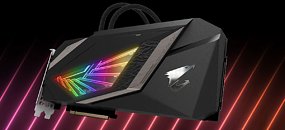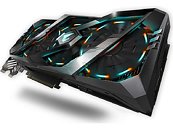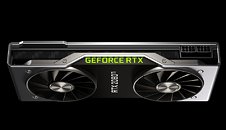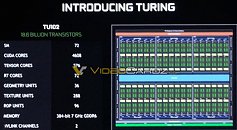
GIGABYTE Intros Aorus Xtreme RTX 2080 Ti and RTX 2080 WaterForce WB
As a follow up to last week's all-in-one liquid cooling based product, GIGABYTE today released the Aorus Xtreme GeForce RTX 2080 Ti and RTX 2080 WaterForceWB. These cards are targeted at enthusiasts with DIY liquid cooling setups, and come with a factory-fitted full-coverage water block, instead of the AIO cooler. The block's primary material is nickel-plated copper with mirror finish, while its top is mainly acrylic, with opaque embellishments, a part of which is an addressable RGB LED diffuser that takes input from a standarized aRGB header. The opaque portion of the top also features a glowing Aorus logo.
The underlying PCB of the RTX 2080 Ti WaterForce WB packs a 16+3 phase VRM that draws power from a pair of 8-pin PCIe power connectors, 1770 MHz GPU Boost frequency, and a memory overclock of 14140 MHz (vs. 14000 MHz). The RTX 2080 WaterForce WB features the same PCB as its AIO-equipped twin, with a 12+2 phase VRM, 1890 MHz GPU Boost, and 14140 MHz memory OC. While the block itself is around 1-slot thick, a second row of display connectors makes the card 2-slot. Among these connectors are three each of DisplayPort 1.4 and HDMI 2.0b, and VirtualLink.
The underlying PCB of the RTX 2080 Ti WaterForce WB packs a 16+3 phase VRM that draws power from a pair of 8-pin PCIe power connectors, 1770 MHz GPU Boost frequency, and a memory overclock of 14140 MHz (vs. 14000 MHz). The RTX 2080 WaterForce WB features the same PCB as its AIO-equipped twin, with a 12+2 phase VRM, 1890 MHz GPU Boost, and 14140 MHz memory OC. While the block itself is around 1-slot thick, a second row of display connectors makes the card 2-slot. Among these connectors are three each of DisplayPort 1.4 and HDMI 2.0b, and VirtualLink.



































































